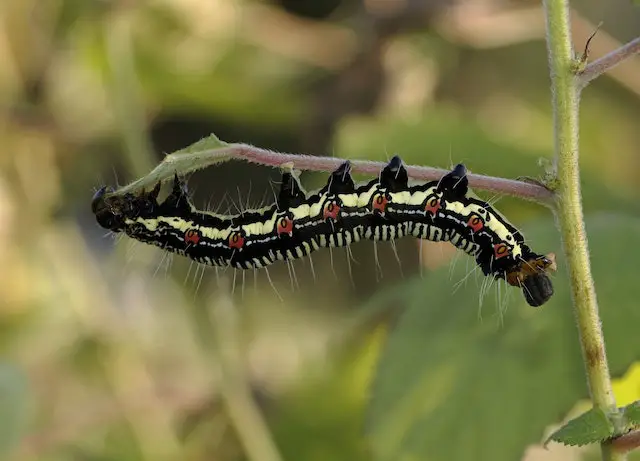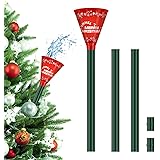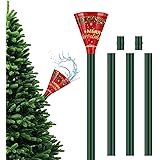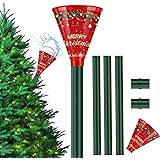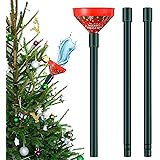Are you wondering how to deal with a caterpillar infestation on your tomato plant? Look no further! Caterpillars on tomato plants are common garden pests and need to be dealt with quickly in order to protect the health of the plant and the harvested fruits.
The key to getting rid of this nuisance lies in understanding the lifecycle of the caterpillar and employing the best management strategies for the particular species. Read on to know more about managing caterpillars on tomato plants.
What You Need To Know About Caterpillar on Tomato Plant
Tomato plants are subject to several different types of pests, among them the caterpillar. A close relative of moths and butterflies, caterpillars are a common sight in gardens and yards around the world and they can cause considerable damage to tomatoes.
In this article we will discuss what type of caterpillars happen to tomato plants, the damage they can cause, and ways to prevent and manage caterpillar populations.
Types of Caterpillars Found on Tomatoes
There are several different kinds of caterpillars that may be found on tomato plants. The most common type of caterpillar is the tomato fruitworm, also known as the corn earworm.
This caterpillar has a yellow or green body and can reach sizes from 1/5 to 1 inch in length. It feeds on the fruit of the plant, and can be difficult to spot because it is so small and blends in with the plant. It is often found in the flowers or fruits of the tomato plant.
The tobacco budworm caterpillar is also found on tomato plants. It is larger than the fruitworm, and reaches a size of up to 2 inches in length. It has a yellowish or brownish color, with stripes of black and yellow running along its body. It also feeds on the plant’s fruits, and is often seen in the flowers of the plant.
The cabbage looper, one of the most destructive garden pests, is also attracted to tomato plants. This caterpillar is pale green in color, and has stripes of white and yellow running across its body. It can reach sizes from 1 to 1.5 inches in length, and is a voracious eater, feeding on both the foliage and the fruits of the plant.
The cutworm is another type of caterpillar found on tomatoes. It is grayish-black in color, and can reach a size of up to 2 inches in length. It feeds on the leaves of the plant, and may also damage the stem and roots. It often goes unnoticed because it is nocturnal.
The last commonly encountered type of caterpillar on tomato plants is the hornworm, also sometimes known as the tomato hornworm. It is green or brown in color, and can reach sizes of up to 4 inches in length. It feeds on the leaves of the plant, and is often spotted because it stands out so much due to its size.
Read More: About Does Sand Prevent Weed Growth?
The Damage Caused by Caterpillar on Tomato Plant
Caterpillar can cause serious damage to tomato plants, particularly in large numbers. Small caterpillars, such as the tomatoes fruitworm, can bore into the fruit of the plant, leaving holes in the skin and causing the plant to rot. This can cause a significant loss of yield, as a significant percentage of the fruit can become infected and unsalvageable.
The tobacco budworm, cabbage looper, and cutworm can also cause considerable damage to the plant’s foliage. They feed on the leaves of the plant, causing them to become ragged and discolored. This disfigures the fruits, reduces the yield, and makes the plant much more susceptible to diseases and pests.
The hornworm is particularly destructive, as it is a voracious eater that can strip an entire plant of its foliage. It is also very difficult to spot, making it hard to distinguish from other pests and diseases that may be affecting the plant.
Ways to Prevent and Manage Caterpillar on Tomato Plant
Preventing caterpillar infestations on tomato plants can be done by controlling the environment around the plant. This includes proper maintenance and weeding of the garden area, as well as avoiding excessive amounts of nitrogen-rich fertilizers.
Organic pest controls can also be used to stop caterpillar infestations. This includes introducing beneficial insects such as ladybugs, lacewings, and praying mantids. Thesse predatory insects seek out and destroy caterpillar populations, thus keeping the plants safe.
In addition to this, bait stations can be used to attract and trap caterpillars. These are typically composed of a shallow box filled with a sweet-smelling bait such as sugar or honey. The caterpillar will then enter the box and become trapped.
Finally, chemical pest controls can also be used to stop caterpillar infestations, including systemic insecticides, natural oils, and baits. These products are effective but can damage the environment, so they should be used carefully and only when needed.
Caterpillar infestations on tomato plants can cause serious damage to the plant, reducing yields and increasing susceptibility to disease. It is important to be aware of the types of caterpillars that may affect the plant and the damage they can cause.
There are several methods that can be used to prevent and manage caterpillar populations, ranging from organic pest controls to chemical pest controls. By taking the proper steps, it is possible to keep the tomato plant safe from caterpillar infestations and ensure a healthy harvest.
FAQs on Caterpillar on Tomato Plant
Caterpillars usually feed on the leaves of tomato plants, causing holes in them. The worm-like pests can also eat away at the unripe fruits on the plants, leaving them with brown spots or decayed sections.
In severe infestations, caterpillars can completely strip away all the leaves from the plant, weakening its state and potentially causing death. It is best to remove the caterpillars from the plants as soon as possible to minimise damage.
The most obvious way to identify a caterpillar infestation on your tomato plants is to look for worm-like pests on the leaves and around the stem.
Other signs of caterpillars include gnawed holes in the leaves and decayed areas on the unripe fruits. You may also find droppings on the leaves and the ground below.
The best way to prevent a caterpillar infestation on your tomato plants is to maintain a regular pruning schedule. This will ensure that damaged or diseased leaves and branches are removed from the plants, making them less appealing to the pests.
Additionally, a protective cover of netting over the plants can act as a barrier against the entry of caterpillars.
The use of predatory insects such as lacewings, ladybugs, and parasitic wasps can help to get rid of a caterpillar infestation on a tomato plant. These natural elements feed on the caterpillars, causing the population to shrink.
Additionally, individuals can also use garlic and chilli sprays to deter the pests from re-infesting the plants.
Once the caterpillar infestation has been controlled, the tomato plant may need some extra help in order to recover. The plant can be pruned, and new branches can be grafted onto it to help promote more growth.
Furthermore, the use of mulch around the base of the plant may improve the soil’s moisture content, enhancing its recovery.
Yes, there are other pests that can damage tomato plants, in addition to caterpillars. Aphids, mites, and slugs are just some of the other creatures that pose a threat to tomato plants. The best way to protect your plants from these pests is to use proper pruning techniques and/or planting resistant varieties.
Caterpillars can infest a wide variety of plants, including vegetables, fruits, and herbs. Common victims of infestations include sweetcorn, peppers, beans, strawberries, and basil.
It is important to be aware of the plants that are prone to the pests, as infestations can spread quickly.
Chemical treatments for caterpillars may not be necessary in all cases. If the infestation is minor and can be controlled through natural elements, then chemical treatments may not be necessary.
However, if the infestation is more significant, chemical treatments may be the only option to get rid of the pests.
Read More: About Do Tomatoes Die After Fruiting?
Wrapping Things Up
It is clear that plant health is dependent on a variety of factors, with the caterpillar on tomato plant being one of them. In order to ensure the growth and health of tomatoes, gardeners must take the necessary steps to protect them from the caterpillar’s presence.
This can involve the use of organic and mechanical methods, such as handpicking them off the plants and using barriers like nets or row covers. Additionally, beneficial insects such as parasitic wasps or lacewings can be used to help control the caterpillar’s population.
Thus, while managing a caterpillar infestation on tomatoes can be a challenge, it can be done. Taking the proper precautions and being consistent with pest management will help ensure the health and success of gardeners’ tomato plants.
In conclusion, the caterpillar on a tomato plant poses a threat to the health and productivity of the plant. Therefore, gardeners must take the necessary steps to protect tomatoes from these pests by utilizing organic and mechanical methods, as well as beneficial insects. Doing so will help ensure the continued success of the garden and tomato crop.
Auto Amazon Links: No products found.
Perfect Plants Christmas Tree Saver 8oz. | Easy Use Xmas Tree Preserver Food | Have Healthy Green Christmas Trees All Holiday Season
$9.97 (as of December 3, 2025 00:36 GMT +00:00 - More info- Product prices and availability are accurate as of the date/time indicated and are subject to change. Any price and availability information displayed on [relevant Amazon Site(s), as applicable] at the time of purchase will apply to the purchase of this product.
Kaiedos Christmas Tree Watering Funnel - 39 Inch Funnel, Reusable Design, Makes Watering Your Live Tree a Snap!
$14.99 (as of December 3, 2025 00:36 GMT +00:00 - More info- Product prices and availability are accurate as of the date/time indicated and are subject to change. Any price and availability information displayed on [relevant Amazon Site(s), as applicable] at the time of purchase will apply to the purchase of this product.
Christmas Tree Watering Funnel, Real Christmas Tree Water Long Funnel About 40 Inch, Trees Watering System for Water Indoor Outdoor
$15.99 (as of December 3, 2025 00:36 GMT +00:00 - More info- Product prices and availability are accurate as of the date/time indicated and are subject to change. Any price and availability information displayed on [relevant Amazon Site(s), as applicable] at the time of purchase will apply to the purchase of this product.
IPOOLTENG Christmas Tree Watering Funnel 3 Tube 1 Funnels 40 Inch - 3 Section Plastic Christmas Tree Funnel Waterer, Long Funnels for Watering Trees, Best Gifts for Your Parents to Water Tree
$15.53 (as of December 3, 2025 00:36 GMT +00:00 - More info- Product prices and availability are accurate as of the date/time indicated and are subject to change. Any price and availability information displayed on [relevant Amazon Site(s), as applicable] at the time of purchase will apply to the purchase of this product.
1 Pack Christmas Tree Watering Funnel System, 44 Inch Christmas Tree Watering Stick with Adjustable 3-Section Design, Reusable & Spill-Free, Xmas Plant Waterer Tool for Indoor and Outdoor
$16.99 (as of December 3, 2025 00:36 GMT +00:00 - More info- Product prices and availability are accurate as of the date/time indicated and are subject to change. Any price and availability information displayed on [relevant Amazon Site(s), as applicable] at the time of purchase will apply to the purchase of this product.
Cuisinart 6.5" Cast Iron Smashed Burger Press, Round Flat Edge Grill Press for Crispy Smash Burgers, Burger Tool for Grill and Griddle Accessories, for BBQs and Tailgates
$24.99 (as of December 3, 2025 16:48 GMT +00:00 - More info- Product prices and availability are accurate as of the date/time indicated and are subject to change. Any price and availability information displayed on [relevant Amazon Site(s), as applicable] at the time of purchase will apply to the purchase of this product.
Muddy Mat® Shown on TV Super Absorbent Microfiber Dog Door Mat for Muddy Paws, Non-Slip Washable Pet Rug, Quick Dry Chenille Entryway Carpet, Machine Washable Indoor Outdoor mat, Grey 30"x19"
$19.95 (as of December 3, 2025 16:48 GMT +00:00 - More info- Product prices and availability are accurate as of the date/time indicated and are subject to change. Any price and availability information displayed on [relevant Amazon Site(s), as applicable] at the time of purchase will apply to the purchase of this product.
Snow Joe Premium Enviro Blend Ice Melt, Green-Coated Deicer Crystals, 50 lb - Safer Melter for Vegetation, Concrete & Metals w/ Anti-Corrosion Calcium Magnesium Acetate
$32.97 (as of December 3, 2025 16:48 GMT +00:00 - More info- Product prices and availability are accurate as of the date/time indicated and are subject to change. Any price and availability information displayed on [relevant Amazon Site(s), as applicable] at the time of purchase will apply to the purchase of this product.
OLANLY Dog Door Mat for Muddy Paws 30x20, Absorbs Moisture and Dirt, Absorbent Non-Slip Washable Doormat, Quick Dry Chenille Mud Mat for Dogs, Entry Indoor Entryway Carpet for Inside Floor, Grey
$9.99 (as of December 3, 2025 16:48 GMT +00:00 - More info- Product prices and availability are accurate as of the date/time indicated and are subject to change. Any price and availability information displayed on [relevant Amazon Site(s), as applicable] at the time of purchase will apply to the purchase of this product.
Zevo Flying Insect Trap Official Refill Cartridges - Fits Both Zevo Trap & MAX Indoor Fly Trap - Authentic Trap+Lock Technology to Catch Gnats, House & Fruit Flys (4 Official Refill Cartridges)
$14.97 (as of December 3, 2025 16:48 GMT +00:00 - More info- Product prices and availability are accurate as of the date/time indicated and are subject to change. Any price and availability information displayed on [relevant Amazon Site(s), as applicable] at the time of purchase will apply to the purchase of this product.

